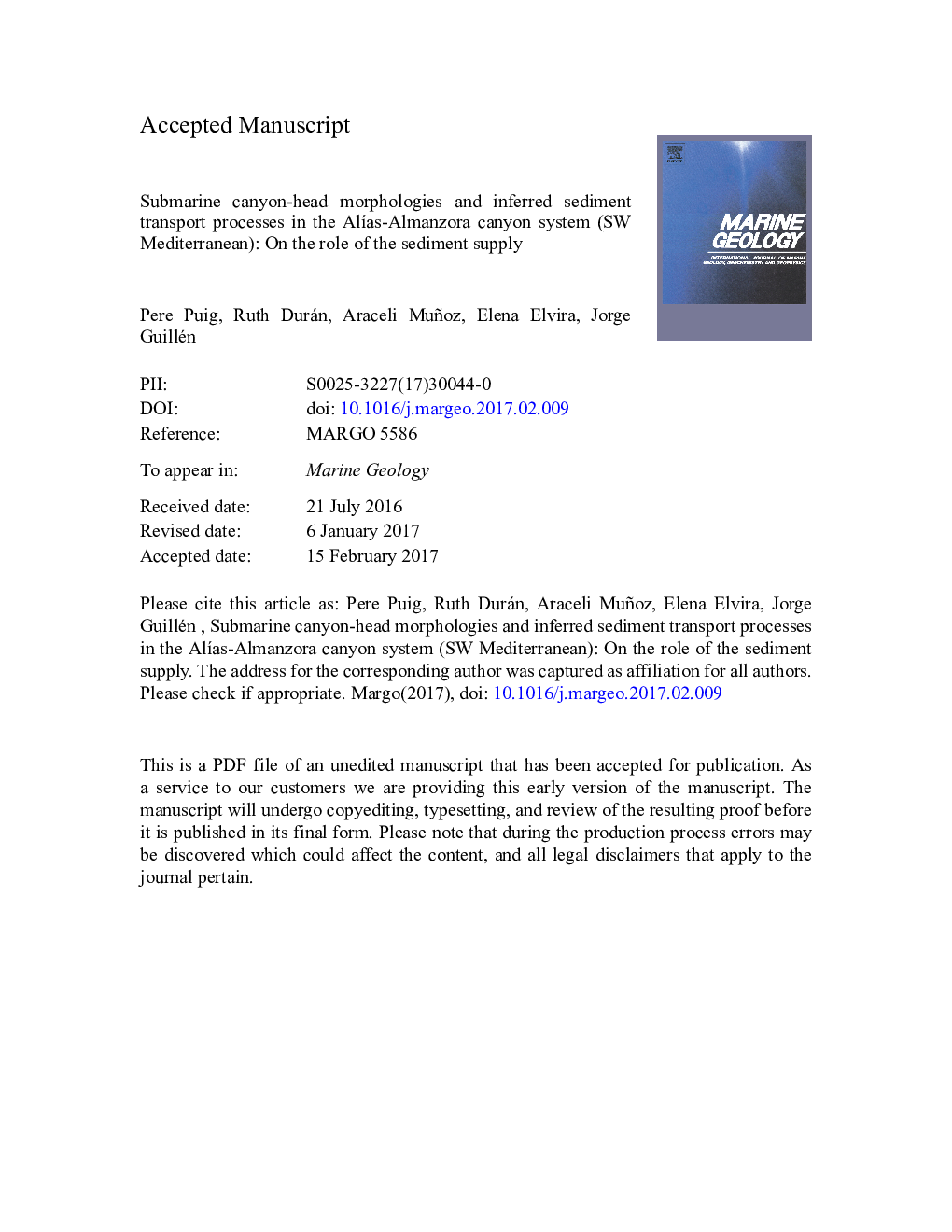| کد مقاله | کد نشریه | سال انتشار | مقاله انگلیسی | نسخه تمام متن |
|---|---|---|---|---|
| 8912082 | 1639059 | 2017 | 44 صفحه PDF | دانلود رایگان |
عنوان انگلیسی مقاله ISI
Submarine canyon-head morphologies and inferred sediment transport processes in the AlÃas-Almanzora canyon system (SW Mediterranean): On the role of the sediment supply
دانلود مقاله + سفارش ترجمه
دانلود مقاله ISI انگلیسی
رایگان برای ایرانیان
کلمات کلیدی
موضوعات مرتبط
مهندسی و علوم پایه
علوم زمین و سیارات
ژئوشیمی و پترولوژی
پیش نمایش صفحه اول مقاله

چکیده انگلیسی
Canyon head regions are key areas for understanding the shelf-to-canyon sedimentary dynamics and assessing the predominant hydrodynamic and sedimentary processes shaping their morphology. High-resolution multibeam bathymetry surveys conducted on the shelf, upper slope and along the main thalwegs of the AlÃas-Almanzora submarine canyon system were used to recognize the specific morphological features of the various canyon heads and infer the main sediment transport mechanism operating through them. Off the Almanzora River, different canyon head morphologies were observed at 65-90Â m water depth, incising the outer prodeltaic deposits. A direct connection from the river supply is evidenced by the presence of a large radial field of sediment waves on the prodelta, presumably related to hyperpycnal flows during flash flood events, and their continuation towards trains of cyclic steps that merge into the Almanzora canyon head. Processes linked to seepage and groundwater sapping also seems apparent in the prodeltaic deposits, which results in pockmark alignments and formation of elongated narrow canyon heads. At the southern limit of the Almanzora prodelta, another type of canyon head results from the formation and merging of linear gullies. These have been interpreted as the morphological expression of the distal off-shelf transport of flood-related hyperycnal flows. However, most of the canyon heads of the main tributaries of this canyon system (i.e., Garrucha, Cabrera and AlÃas) are found at much shallower water depths (7-20Â m). They generally show a continuation in land with rivers or intermittent creeks (known as “ramblas”) that also experience flash flood events, but some of them are disconnected from any river source. These canyon heads cut into the infralittoral prograding wedge, displaying feeder channels that tend to oriented against the direction of the prevalent long-shore current. Some canyon head tributaries show sediment waves along their axis interpreted as the result of hyperpycnal flood events or storm-induced turbidity flows. This study focusses on the diversity of sediment transport processes that can co-exist in the various canyon tributaries of a given submarine canyon system, stressing on the importance of the canyon heads location with respect to the principal sedimentary source, which ultimately determines their main geomorphological traits.
ناشر
Database: Elsevier - ScienceDirect (ساینس دایرکت)
Journal: Marine Geology - Volume 393, 1 November 2017, Pages 21-34
Journal: Marine Geology - Volume 393, 1 November 2017, Pages 21-34
نویسندگان
Pere Puig, Ruth Durán, Araceli Muñoz, Elena Elvira, Jorge Guillén,